Death by needle is supposed to be a quiet affair. The victim slips into sleep, then dies with barely a murmur. Unless they don't.
Bennie Demps's execution was a literal bloodbath. No suitable vein could be found, so wardens began cutting him to find one. Three large bore marks were etched into his groin and legs, and he was 'bleeding profusely' from them. There were lesser scratches elsewhere.
When the curtain was finally raised to display him, a white sheet had been draped over him to cover up the injuries. Bennie screamed at witnesses, "They butchered me back there. This is not an execution, it is murder." Sutures were now in place to stem the flow of blood.
But they had got the catheters into his arms now and Bennie died on June 7th 2000, in Texas, USA.
 Raymond Landry Sr. was a muscular man. One warden described him as having arms like cartoon character Popeye. Finding a vein was not a problem. Keeping it in was very much one.
Raymond Landry Sr. was a muscular man. One warden described him as having arms like cartoon character Popeye. Finding a vein was not a problem. Keeping it in was very much one.
Two minutes after the catheter was inserted and the drugs started flowing, it started leaking. For one moment, the deadly cocktail was dribbling down Raymond's arm, but then the pressure became too much.
The whole syringe came loose and the tube shot up into the air. The liquid drugs showered over everyone present and drenched the window, behind which witnesses watched in horror.
Wardens rushed to stop the flow and a curtain was drawn back to shield onlookers from the scene on the gurney now. However, they could still hear everything.
For over 14 minutes there was movement with doors opening and closing. They overheard Raymond groaning loudly, then silence. When the curtain was drawn back, he was already dead, staring motionless up at the ceiling.
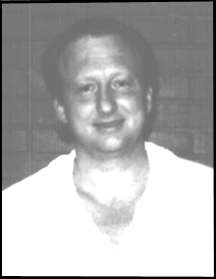 This same scenario occurred again at the execution of Joseph Cannon, in Texas, USA, on April 23rd, 1989. His vein collapsed as the drugs rushed through the tube and the catheter just popped out.
This same scenario occurred again at the execution of Joseph Cannon, in Texas, USA, on April 23rd, 1989. His vein collapsed as the drugs rushed through the tube and the catheter just popped out.
An incredulous Joseph must have thought that he was saved. He looked at it and gasped at witnesses, "It's come undone!" Then his head fell back onto the gurney and he closed his eyes in relief.
Prison wardens merely closed the curtains, so that witnesses could no longer see. But they heard Joseph start to cry. He was visibly weeping, when the curtains parted again fifteen minutes later. The execution started again and this time it killed him.
Incidentally, Joseph had been on Death Row for twenty-one years for a murder committed when he was just seventeen years old. He was also schizophrenic. Both his mental state and the fact that he was a juvenile at the time of receiving his death penalty rendered his case extremely controversial.
In 1989, Texan prison officials and execution witnesses were just not prepared for what was about to happen to Stephen McCoy. Unknown to all present, including the victim, he was allergic to Pentothol.
As soon as the drugs hit Stephen's system, it was obvious that his reaction was not textbook. His chest starting heaving and he gasped for breath. Next he began choking, before a fully fledged seizure threatened to tear the straps from his limbs. His back arched and he was obviously asphyxiating.
The scene was so violent that one of the male witnesses fainted outright, collapsing onto the lady beside him. Everyone watching had turned pale and Stephen's lawyer honestly believed that a chain reaction of fainting would begin. But then Stephen died in front of their eyes.
It had not been lethal injection per se that had killed him, but his allergic reaction to it. The Texas Attorney General Jim Mattox opined that the dosage in the tubes may have been too strong.
On March 10th, 1992, something very similar occurred in Oklahoma during the execution of Robyn Lee Parks. Spasms began in his abdomen and assaulted his neck and jaw too. He started choking, gasping out for breath.
It took eleven minutes for Robyn to die, in an execution which a witness called 'scary and ugly'.
 Shortly afterwards, it happened yet again in Texas. Justin Lee May displayed all of the now classic signs of allergic reaction. He started coughing raucously, as his body went into spasm. His mouth wide in a gasping scream, Justin's back arched so violently that all of the straps were strained to the limit of their endurance.
Shortly afterwards, it happened yet again in Texas. Justin Lee May displayed all of the now classic signs of allergic reaction. He started coughing raucously, as his body went into spasm. His mouth wide in a gasping scream, Justin's back arched so violently that all of the straps were strained to the limit of their endurance.
Then his body froze and he slumped back onto the gurney. Horrified witnesses still heard groans, but Justin was now paralyzed. His eyes and mouth remained fixed open until the very end.
On May 3rd 1995, in Missouri, USA, Emmitt Foster's death by lethal injection did not go well. The drugs had been in his system for seven minutes. He should have been comatosed by now, but he was wide awake and gasping for air. He should have also been paralyzed, but his body was wracked by convulsions. He should have been dead, but he patently was not.
The curtains were drawn to save the witnesses from any more distress, but they could still hear Emmitt's desperate struggles on the gurney.
The Washington County Coroner William "Mal" Gum was waiting in another room ready to receive the corpse. As the nearest medical man, he was requested to go into the death chamber and give his expert opinion on what could possibly be done to end Emmitt's suffering.
William agreed to go in and he spotted the problem immediately. The straps on the gurney were so tight that they were cutting off the big man's circulation. The drugs were all trapped behind them, so couldn't reach either Emmitt's brain nor heart. This had now been on-going for thirty minutes.
The wardens loosened the straps and Emmitt quickly died shortly afterwards.
Convulsions were very much in evidence for the execution of Scott Carpenter, in Oklahoma, USA, on May 8th 1997. At first, there were just groans, then his stomach and chest began 'pulsing'. His complexion turned yellowish grey, before the first convulsion began. It was very violent; and it was the first of eighteen such seizures.
It took eleven minutes for Scott to die. He did so in agony, with his face now turned a vicious purple and his jaw clenched. Finally the convulsions became less frenzied. There were eight mild spasms, until he died with a final gasp.


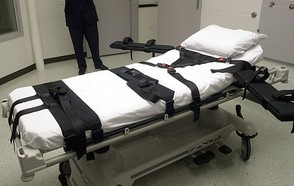


 There is little information about how death by needle occurs in China.
There is little information about how death by needle occurs in China.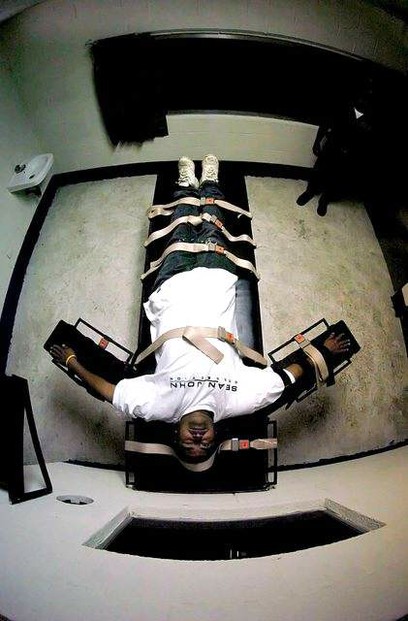



 Every drug used in lethal injections is also used in every major hospital every day. The difference is the quantity.
Every drug used in lethal injections is also used in every major hospital every day. The difference is the quantity.


 In 1980, a consortium of Death Row prisoners launched a lawsuit against the FDA. The inmates, who were all awaiting execution in Oklahoma or Texas, in the USA, sought to force manufacturers to attach labels to their drugs.
In 1980, a consortium of Death Row prisoners launched a lawsuit against the FDA. The inmates, who were all awaiting execution in Oklahoma or Texas, in the USA, sought to force manufacturers to attach labels to their drugs.


 Originally Hospira simply closed its US factories and moved to Italy.
Originally Hospira simply closed its US factories and moved to Italy. With legal suppliers refusing to do business and a world wide shortage of Pentothal, prison officials saw no option but to illegally import the drug.
With legal suppliers refusing to do business and a world wide shortage of Pentothal, prison officials saw no option but to illegally import the drug. Done correctly, with doctors administering quality controlled drugs, in properly measured quantities, then there is an argument that lethal injection could be a humane way to die.
Done correctly, with doctors administering quality controlled drugs, in properly measured quantities, then there is an argument that lethal injection could be a humane way to die.
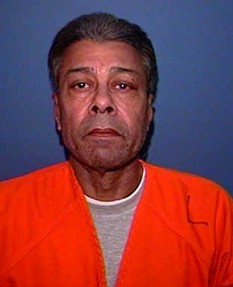 On December 13th 2006, Ángel Nieves Díaz was strapped to the gurney in Florida State Prison, Raiford, USA.
On December 13th 2006, Ángel Nieves Díaz was strapped to the gurney in Florida State Prison, Raiford, USA. James David Autry was only the second American to be killed using death by needle; and he wasn't impressed.
James David Autry was only the second American to be killed using death by needle; and he wasn't impressed.




 Raymond Landry Sr. was a muscular man. One warden described him as having arms like cartoon character Popeye. Finding a vein was not a problem. Keeping it in was very much one.
Raymond Landry Sr. was a muscular man. One warden described him as having arms like cartoon character Popeye. Finding a vein was not a problem. Keeping it in was very much one. This same scenario occurred again at the execution of Joseph Cannon, in Texas, USA, on April 23rd, 1989. His vein collapsed as the drugs rushed through the tube and the catheter just popped out.
This same scenario occurred again at the execution of Joseph Cannon, in Texas, USA, on April 23rd, 1989. His vein collapsed as the drugs rushed through the tube and the catheter just popped out. Shortly afterwards, it happened yet again in Texas. Justin Lee May displayed all of the now classic signs of allergic reaction. He started coughing raucously, as his body went into spasm. His mouth wide in a gasping scream, Justin's back arched so violently that all of the straps were strained to the limit of their endurance.
Shortly afterwards, it happened yet again in Texas. Justin Lee May displayed all of the now classic signs of allergic reaction. He started coughing raucously, as his body went into spasm. His mouth wide in a gasping scream, Justin's back arched so violently that all of the straps were strained to the limit of their endurance.





 St Tydecho's Churches in West Waleson 09/03/2014
St Tydecho's Churches in West Waleson 09/03/2014
 Goodies for an Outlander Premiere Partyon 03/06/2015
Goodies for an Outlander Premiere Partyon 03/06/2015
 Holocaust Memorial Day Interview with Rainer Höss, Grandson of Rudolf Architect of Auschwitzon 01/24/2015
Holocaust Memorial Day Interview with Rainer Höss, Grandson of Rudolf Architect of Auschwitzon 01/24/2015
 Romantic Valentine Gifts for an Outlander Fanon 01/16/2015
Romantic Valentine Gifts for an Outlander Fanon 01/16/2015


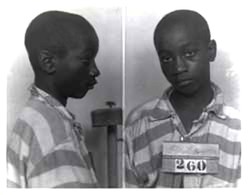
Comments
Reading your testimony had me cringing in my seat. I can't imagine the pain that's involved in lethal injections. The horror is too much; especially when those suffering it know that, as soon as the agony stops, they will be killed.
It looks and sounds like torture to me. Something medieval and horrific in the 21st century.
I don't support the death penalty and this made me flinch greatly.
I get my blood drawn very frequently for medical reasons. I only have one "good vein" and it is very scarred because of that. Reading this all I could think of is how hard it is to get a vein in other places but how easy fixing a few of those problems could be.
A final meal of a hamburger or pie when not given enough liquid can make veins tiny. Not being able to move a bit can slow blood flow and also make veins tiny. Sometimes removing a tourniquet is necessary to make certain veins usable and not just in the hands.
I have no medical degree and I knew those things. The idea that the people administering the drugs don't know that or even have the common sense to guess it makes this all the more horrifying to me.
Also I know the pain is nothing all things considered, but built up scar tissue being pierced is not a poke. Most often it feels like a small stabbing like with a Swiss army knife.
I'm glad that it was thought-provoking. That was my personal remit in writing these. And if I have convinced you against it, then I feel very proud. Thank you.
I tended to follow the information, which in turn was very US-centric. But you are right, there should be more about the other countries which use lethal injections. I will see what I can uncover.
Another very thought-provoking article. You have pretty much convinced me against the death penalty by now. One thing I would have liked to have learned more about is the lethal injection in countries other than US. I know that US has been using this method longer than most places but a little variety would be enlightening.
Thank you for your feedback too, Lucas. I know that when I read articles about familiar things, it's to find a nugget of something new.
I've had some moments with needles which has made me very wary of them. I remember once being given a tetanus jab that hurt so much I screamed and flinched. The nurse jumped and the needle came out, it went back in further across my arm. That hurt even more. Then she still had to take it out and insert it where it should have been in the first place.
I learned to stay still from that one.
Toning down your articles will just make them boring.. Sure, it'll let more people understand your article, but for others, it'll just be a repetition of things they already know. It's much more interesting to discover new stuff every time you read something.
(And as Katie said, having them digging for veins hurts like hell... Happened once, and never wanted to repeat the experience...)
Von von Vonn - Thank you for your pointers; and I'm glad that you liked the RS micro-transactions one. I'd disagree about writing a level below your target audience though. Wouldn't that end up patronizing, if you're dumbing down each level? I'd have thought it better to go up a level. Though, of course, always keeping it simple is good. Waffle on for the sake of waffling and you lose everyone.
Katie - I'm very glad that it was informative! Reading your comment made me proud to have written it, as it was highlighting precisely this sort of stuff that I wanted to get out there. It's a terrible subject to have to consider, so many people never do. They just assume that everything happens to the best of everyone's abilities. With lethal injection in particular, there seems a mindset that it's just like lying down and going to sleep. The only difference being that the victim doesn't wake up again later.
I've never considered the insertion of the needle till after having read this. I myself have small veins, and if remotely stressed or dehydrated slightly inserting a needle for blood work or for an IV can be a horrible experience as they try numerous times to find my veins the poking and moving around of the needle is painful and makes one near faint. The needle size is varied in this event as IV needles are small in comparison to what you explained, I can't imagine. I always hope for a person who's really good with a needle, for those who are not have a terrible time with small veins. This gave me a entirely new insight as to the suffering that occurs before hand given the prep. I had no idea, I'm speechless! Very well done and not one bit long, it flew by as it is very informative.
I can only talk for myself, so what I am saying could be irrelevant.
I would never change a finished article, (or only add new updates if recent news).
Just my thougts
First off, keep writing and publishing. Never let any comment get you to stop or doubt.
Maybe I am wrong, maybe it will make your work even better
How to organize an article...
First off, what is it you want to write or do with the article? inform, persuade, different reason? But please do not try to focus on both in one article. Only inform, or inform only to persuade.
Organization of an essay to persuade
Start is always preamble, what is the subject , and the thesis you want to attack/defend.
Arguments from both sides, often new paragraph every new argument.
In the end a conclusion with a small summary of previous paragraphs that concludes that an justified opinion on the thesis.
rs-jagex-microtransactions I think is a well-organized article.
What is your audience? Some people say (awesome argument, always works for Fox News) that if writing for a college audience, write it for high-school
If writing for high-school audience, write it for 10-year old. It does make some sense to me. Keep it simple.
If you do want to share more in- depth information, I would use a link to the source. More links, more sources, more credible, and if people want to go in depth, they can. And for the random stupid consumer, they can still get the point without reading all the information.
Do you know Cracked? (the site). I love most of those articles (the rest is not good, only the articles). I would totally read the most 5 gruesome lethal-injections that went horrible wrong? Some morbid jokes and informative mostly, and most of this information speaks for itself.
Keep writing, and I want to dare you to write an article for Cracked. No clue about pay-out and stuff, but I think bigger audience.
Thank you for the Thank you.